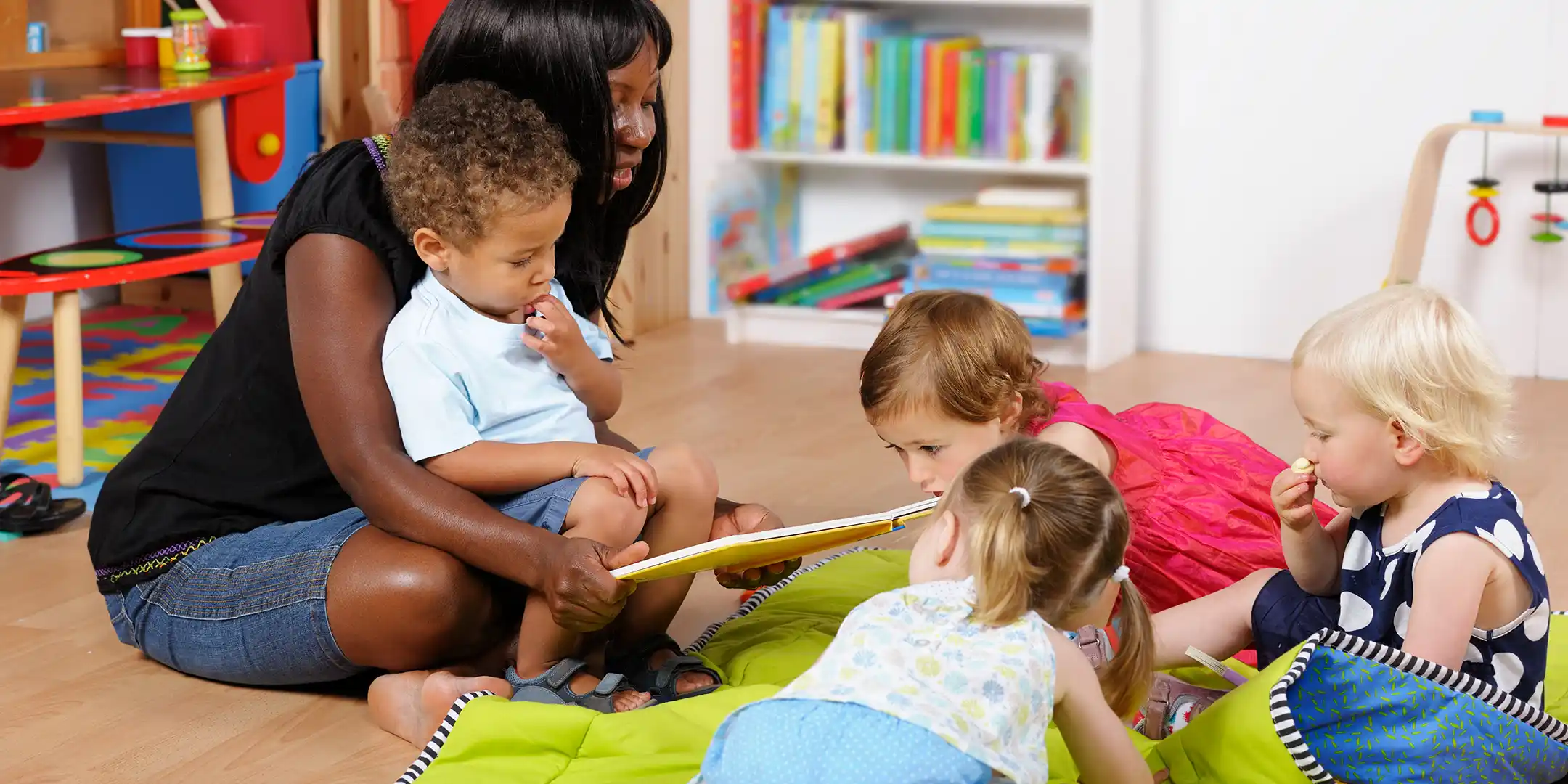Conscious Discipline has been shouting it from the rooftops for decades: early childhood plays a pivotal role in shaping the lives of young children, with the years between birth and five years being the most critical. Brains are sponges during this foundational time, absorbing information such as language, motor skills, and social cues quickly, and every child deserves the opportunity to have the strongest foundation possible. ( VeryWellMind) Head Start and Early Head Start programs exist as free, federally funded programs. They achieve remarkable results by providing equitable opportunities for growth and learning for infants, toddlers, and preschoolers from families that meet income eligibility requirements. (ChildCare.gov).
According to research, children who attend Head Start are 12% less likely to live in poverty as adults and 29% less likely to receive public assistance. Evidence shows that Head Start also enhances the education level, employment status, and income of the families of children who attend. Fostering the social and emotional development of all stakeholders is an essential component of Head Start’s success. The integration of Head Start and Early Head Start Programs with Conscious Discipline—a 25+ year leader in self-regulation, school culture, and executive skills development—provides the adult-first, trauma-informed social and emotional foundation necessary for students, families, and teachers to thrive.
The Need for Self-Regulation Among Head Start Teachers
There are over 1,311,207 Head Start teachers currently employed in the United States, but the turnover rate is high and growing. (Zippia.com). The 2021-22 year experienced a particularly sharp increase exceeding 28% of Head Start teachers. Turnover rates vary by program type, with Early Head Start programs exhibiting higher turnover than traditional Head Start programs, and American Indian Alaska Native (AIAN) Early Head Start programs seeing the highest rate at 37.1%. (Research for Action)
There are several reasons why early childhood educators aren’t staying in their positions, even though they are passionate about the development of young children. One of the challenges some face in Head Start and Early Head Start programs is managing the emotional and behavioral needs of children who have experienced trauma or live in stressful home environments. This can create a school environment that is also stressful, when not approached proactively. Other concerns such as feeling undervalued and changing mandates also add to the mix, increasing the stress and workload that come with the responsibility of managing a classroom full of young children.
The Brain Smart Start Solution
Conscious Discipline practitioners who work with Head Start and Early Head Start programs have seen enormous improvement in morale, composure, wellbeing and behavior of both teachers and students with the introduction of a Brain Smart Start.
The stress of simply getting up and out the door for both teachers and students in Head Start programs is enough to set the tone for the rest of the day. Some teachers have families of their own and they need to assist with lunches, clothing, bathing, and backpacks in the morning; often with different drop-off times. Students may be expected to wake themselves, assist their siblings in getting ready, and prepare food. By the time they arrive, some teachers and students feel like they’ve lived an entire day already. A Brain Smart Start is a necessary pause to recalibrate brains and bodies for optimal learning.
A Brain Smart Start is a ritual to initiate at the beginning of every day. As explained in Shubert’s Classroom, a Brain Smart Start Is comprised of four components: an activity to unite, an activity to disengage stress, an activity to connect, and an activity to commit. They are specifically designed to balance and integrate brain and body function for both teachers and students, shifting from a disorganized to an organized internal state. This calm, organized internal state is the only state from which learning and the application of executive functioning skills can take place.
Kenedria (Keke) Thurman, Director of Florida A&M University’s Educational Research Center for Childhood Development and a Conscious Discipline Certified Instructor, has worked with countless Head Start and Early Head Start educators over the course of her career. She’s witnessed firsthand how the partnership between Conscious Discipline and Head Start Programs, including the introduction of the Brain Smart Start, has a positive impact on the children and the staff.
“Conscious Discipline helps address preschool bias and focuses educators on equitable learning for all children,” Keke says. “I have trained with many first time Conscious Discipline practitioners, who are also new to Head Start, and these educators express overwhelm with mandates, challenging student behaviors, and feeling undervalued in the field. After our sessions, they report feeling motivated and equipped to address the varying needs of the industry, while taking notice of their own internal state and ability to meet children’s social and emotional needs. While staff manage turnover, class size, circumstances, and other factors, they are aware of the value in starting their day the Brain Smart Start way.”
Participation in a Brain Smart Start and the regular practice of the Seven Powers of Conscious Discipline create a mindset shift that results in higher achievement and attendance rates and lower teacher turnover. When asked why Brain Smart Starts are so powerful, Keke explains, “It leads to predictability for the adults and children. Ultimately a Brain Smart Start creates an intentional path to navigating challenging moments. One early educator said they have planned a trio of Brain Smart Starts: one for themself, another in the car with their children on the way to school arrival, and lastly with colleagues at work through Brain Smart Starts at their morning staff meeting.”
Children who enroll in quality programs like Head Start and Early Head Start when they are young are better prepared for kindergarten with improved literacy, better math skills and larger vocabularies, and live more stable, successful lives into adulthood. Teachers excel in environments in which their wellbeing and mental health are acknowledged and supported, lowering turnover. (Childcarenj.gov). When Conscious Discipline’s routines, rituals and structures are implemented within Head Start Programs, it paves the way for composure, deeper connections, and brain-body integration, creating the perfect pathway for optimal learning for all.
__________________________________________________________________________________
If you’re new to Conscious Discipline and would like to know more about how the implementation of its practices could positively impact your own life and work, here are a few great resources to start:
Resources
- The Four Components of Conscious Discipline
- How Does Conscious Discipline Compare with Other Programs?
- Ten Reasons to Shift to Conscious Discipline
- How to Transform Your School with Conscious Discipline
There’s nothing like meeting up with your Conscious Discipline Family in person. Check out our events page often for the latest inspirational workshops, institutes, and conferences near you!
Have a question? You can now connect with live support, available on weekdays from 9 am to 5 pm. ET. Click on the blue and white thought bubble icon on the bottom right-hand side of the page to connect to a team that is waiting to help.
Sometimes questions can’t wait for working hours. From 5 pm to 9 am. ET, you can access a custom Conscious Discipline chatbot designed to assist you with our most common support requests. If your question requires more personal support, select the “Contact” button to send your inquiry to the appropriate team and someone will get back to you.
There is so much good just around the corner for Conscious Discipline! To keep up with our latest news follow us on…
Facebook , Instagram, Threads , TikTok, Pinterest, LinkedIn , YouTube , X
Other Resources:
- Creating a School Family Through Connection Video
- Shubert’s Classroom I Love You Rituals
- Shubert’s Classroom Brain Smart Start
- Traditional Discipline Vs. Conscious Discipline Poster
- Six Weeks to Success: Conscious Discipline Implementation for Preschool and Early Elementary
Articles:
- TeachStone Highlights Conscious Discipline as Compatible with CLASS use in Head Start Agencies
- Seven Powers: Power of Unity
- Why Classroom Management Doesn’t Work
Upcoming Events
- Anger and Rage: Planning Our Response: Education Event in Orlando, FL
- Conscious Discipline Advanced Institute in Navasota, TX: Advanced Educator Event
- Conscious Discipline Institute in Asheville, NC: Summer Educator Event
- Centering the Adult Brain: Coaching Yourself So You Can Coach Others: Education Event in Edmond, OK
- Conscious Discipline Institute in Orlando, FL: Summer Educator Event, 7/7-12
- Brain Ready: The Power of Ritual and Routines in Early Childhood: Early Education Event in Edmond, OK




